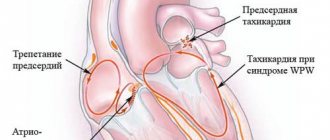Each country maintains annual disease statistics. The data obtained allows us to take the necessary measures to avoid further progression of the disease. Analysts say that thanks to this, the average life expectancy of humanity is gradually increasing.
Disease mortality rates
Statistics of deaths from diseases show that death usually occurs due to ignoring regular medical examinations. People prefer to cope with minor ailments on their own. However, often such manifestations indicate the presence of a dangerous disease. Disease statistics in the world identified the main causes of mortality in 2020:
- Cardiac ischemia.
- Stroke.
- Lower respiratory tract infection.
- COPD (chronic obstructive pulmonary disease).
- Respiratory cancer.
- Diabetes.
- Various dementias, including Alzheimer's disease.
- Diarrhea.
- Tuberculosis.
- Cirrhosis of the liver.
- Kidney diseases.
- HIV or AIDS.
- Prematurity of the fetus.
- Hypertensive heart diseases.
- Liver cancer (hepatocellular carcinoma).
- Colorectal cancer.
- Stomach cancer.
- Asphyxia and injuries during childbirth.
Statistics of mortality from diseases in Russia:
- diseases of the circulatory system – 48%;
- malignant neoplasms – 15%;
- diseases of the digestive organs – 5%;
- pathologies of the respiratory system – 4%;
- diseases of a parasitic and infectious nature – 2%;
- other diseases – 18%;
- external reasons – 8%.
Disease statistics in Russia show that due to pathologies of the circulatory system (stroke, coronary heart disease), men die 2 times more often than women. Such diseases are observed more in older people. Causes of death among young people:
- Diseases of the respiratory system.
- Tuberculosis.
- HIV AIDS.
Mortality statistics in Ukraine:
- cardiovascular diseases – 68%;
- oncological formations – 13%;
- diseases of the respiratory system – 2.4%;
- infectious diseases – 2%;
- alcohol poisoning – 4%;
- accidents – 6%.
Chlamydia
Men:
- incubation period from a week to a month;
- inflammatory process in the urethra, which is characterized by slight pain and itching;
- pain can also spread to the external genitalia and radiate to the lumbar region;
- small amounts of mucous discharge from the urethra;
- in severe cases of the disease, the discharge may be mixed with pus;
- increase in body temperature to 37;
- general weakness as a sign of intoxication of the body.
Read also Analysis for herpes type 2
Woman:
- vaginal discharge is mucous or with the addition of pus;
- may have a yellow color and an unpleasant odor;
- mild pain syndrome of both internal and external genital organs;
- pain during urination;
- increased pain before menstruation;
- the appearance of bleeding not associated with menstruation;
- increase in body temperature to 37;
- weakness.
Treatment is carried out with Klacid. Taken as prescribed by the doctor. Klacid is incompatible with alcohol, so it is important to completely exclude alcoholic beverages from your diet for the period of treatment. Sexual intercourse only using a condom.
Important! It is necessary to take tests, since the presence of trichomoniasis radically changes the treatment. In this case, trichomoniasis should be treated first, and then chlamydia. This is due to the fact that chlamydia can use Trichomonas as a shelter, thereby protecting itself from the negative effects of antibiotics.
Diseases of the circulatory system
According to statistics, heart disease causes 1/3 of all deaths in the world. Back in 2020, more than 400 million cases were recorded. Of these, 18 million were fatal. Most cases recorded:
- In eastern Europe.
- In central Asian countries.
- In the Middle East.
- In South America.
- In Oceania.
- In Africa.
The following countries show the lowest indicators:
- Israel.
- Spain.
- Peru.
- Andorra.
- Japan.
- France.
Indicators for the number of deaths from heart and vascular diseases per 100,000 people:
- Turkmenistan – 461.
- Ukraine – 384.
- Belarus – 342.
- Russia – 320.
- Poland – 136.
- China – 99.
- USA – 78.
- Germany – 63.
- Denmark – 45.
- France – 30.
Statistics of coronary heart disease
Among diseases of the circulatory system, coronary heart disease is the most common. A few decades ago, it was observed in older people. However, today young people are also at risk of the disease. According to statistics from coronary heart disease in the CIS countries and Europe, for every 100,000 citizens the following dies:
- Moldova – 496.
- Ukraine – 491.
- Kyrgyzstan – 444.
- Russia – 359.
- Lithuania – 313.
- Latvia – 248.
- Estonia – 199.
- Romania – 187.
- Kazakhstan – 181.
- Czech Republic – 161.
You can reduce the incidence of cardiovascular diseases by:
- giving up bad habits (smoking, drinking alcohol);
- proper nutrition;
- active lifestyle.
Hypertension statistics
One of the most dangerous pathologies of the circulatory system is hypertension. According to statistics, from 10 to 30% of the world's population suffers from hypertension. The highest indicators are:
- Russia.
- Poland.
- USA.
- Finland.
In these countries, 30 to 40% of citizens are sick. Hypertension can develop as an independent disease and as a provocateur of other ailments, for example, stroke or heart attack. According to experts, more than 80% of deaths associated with the circulatory system occur as a result of the progression of pathology.
The Russian Ministry of Health states that 48% of the male population suffers from hypertension. For women the figure is 40%. The spread of the disease occurs due to lack of control of pressure indicators. Only 23% of patients do this regularly.
Pathologies of the respiratory system
According to WHO, the statistics of respiratory diseases in the world account for 40% of the total incidence. The indicators are different in each country:
- adult population – 29.2–43.5%;
- children – 65.4–83.8%.
In the world, more than 1 billion people are affected by chronic respiratory diseases, which can result in death. The most common are:
- bronchial asthma;
- chronic obstructive pulmonary disease;
- occupational lung diseases;
- pulmonary hypertension.
Most often, respiratory diseases occur due to exposure to environmental and occupational factors. It is possible that in 2020, chronic pulmonary diseases will be one of the main causes of death.
Statistics of bronchial asthma
In the world, almost 300 million people suffer from bronchial asthma. About 83% of patients are between 40 and 59 years of age. An infectious disease of the allergic form occurs at the age of 20–29 years. Before the age of 20, pathology is more often diagnosed in men. After 20 years - in women. Unlike men, they get sick 2 times more often. The prevalence rate of bronchial asthma is 6.1 per 1000 people.
COPD statistics
Disease statistics place COPD in 4th place in the world. The disease is the cause of death for 2.75 million patients. Almost 90% of deaths occur in low-income countries. About 65 million people have been diagnosed with this condition.
The disease occurs almost equally in men and women. It occurs due to a person’s exposure to conditions harmful to health (4.5–24.6%). In other cases, the cause of the disease is smoking. Mortality rates per 100 thousand people:
- Sweden, Norway, Greece and Iceland – from 0.20.
- Romania and Ukraine – up to 80.
In the Russian Federation, the number of patients with COPD is about 1 million.
Bronchiectasis Statistics
Another common ailment is bronchiectasis. It accounts for 12 to 35% of the total number of chronic pulmonary diseases. Impaired lung drainage from bronchiectasis is statistically observed in 2% of the world's population. Most often, the disease affects men under 25 years of age.
According to statistics, children's diseases associated with the respiratory system are in 5th place. About 16% are pulmonary diseases of a nonspecific chronic nature. Of these, 1% is bronchiectasis. About 25% of children aged 5 to 10 years die from the disease. 45% of children develop more complex forms of the disease. Sick children are 6 times more likely to be diagnosed with tuberculosis.
Diabetes
Diabetes mellitus is one of the most exciting pathologies. The number of patients is growing noticeably, and the disease affects the quality of life even in a milder form, when additional insulin injections are not yet required. “More than 5,000 people are diagnosed with this every second. We can talk about an epidemic of diabetes,” says the therapist.
There are certain early signs that allow you to recognize the onset of diabetes and quickly take control of your life so that there are no dangerous consequences. Among them:
- constant feeling of hunger;
- constant fatigue;
- thirst or dry mouth;
- you place a glass of water near your bed at night;
- Article on the topic
Diabetes mellitus and COVID-19. What you need to know to avoid complications: increased urination;
- blurred vision;
- skin problems (dryness, fungus);
- wounds heal poorly;
- pain or numbness in the legs;
- frequent or persistent cough;
- sputum separation;
- shortness of breath or difficulty breathing;
- symptoms occur more often in the morning;
- constant fatigue, fatigue.
If suddenly such symptoms appear, or even several at once, it is better not to attribute it to overwork and not hope that everything will return to normal on its own. It is necessary to take tests: blood, urine and blood glucose levels. You also need to visit a therapist and endocrinologist. Treatment today to maintain the body in working condition is free.
Gastrointestinal pathologies
Almost 89% of the world's population, when abdominal pain appears, does not even suspect that they are at risk. Such a symptom may indicate the formation of pathology in the gastrointestinal tract (GIT). Every 30-year-old person has at least one disease of the digestive system.
According to statistics, the most common gastrointestinal diseases are gastroduodenitis and gastritis. They are observed in 50% of the adult population of the planet. Most often, chronic gastritis is diagnosed, which is observed in 80–90% of gastroenterologist patients. The disease accounts for up to 80% of the total number of gastric diseases.
Diseases of the stomach and duodenum
With further progression of chronic gastritis, a stomach ulcer forms, which is observed in every 15 adult patients. According to statistics, gastric and duodenal ulcers account for 5 to 15% of the total number of digestive diseases.
Statistics on gastric and duodenal ulcers show that such pathologies are found 2 to 4 times more often in men than in women. Duodenal ulcers are diagnosed three times more often. If gastric ulcers are more common at the age of 40–60 years, then duodenal ulcers are observed in citizens aged 25–40 years.
Gallstone diseases
Cholelithiasis (ICD code 10 K-80) also refers to gastrointestinal pathologies. It is observed in 10% of the world's population. Disease statistics show that this pathology is 2 times more likely to occur in women than in men. The leaders in gallstone diseases are:
- CIS countries.
- USA.
- Europe.
The number of patients almost doubles every decade. At the same time, in India, East Asia and Japan, incidence rates were reduced to a minimum. General mortality statistics from cholelithiasis indicate low rates. Lethal outcome is observed in the case of:
- acute cholecystitis – 1–6%;
- choledocholithiasis – 15–30%;
- cholangitis – 7–40%;
- biliary pancreatitis – about 90%.
Crohn's disease
One of the rare gastrointestinal diseases is Crohn's disease. It usually occurs between the ages of 20 and 40. Less common in children. According to statistics, Crohn's disease affects up to 0.1% of the world's population.
Gastrointestinal mortality statistics
Men die from diseases of the gastrointestinal tract by 38% more often. Causes of mortality:
- liver pathologies due to alcohol abuse – 45%;
- pancreatic diseases – 17%;
- peritonitis – 1%;
- appendicitis – 4%;
- intestinal infarction – 4%;
- peptic ulcer of the stomach and duodenum – 10%.
What to do at the first signs of coronavirus, how to check it yourself at home
Even if there is a deterioration in general health, these may not be the first signs of coronavirus, so you need to check it yourself at home:
- Measure your body temperature in the morning immediately after waking up and in the evening before going to bed. If low-grade fever (within 37-37.8 degrees) persists for two days in a row at any time of the day, then you need to call a doctor.
- Go outside wearing a mask (the coronavirus may already be in your body) and walk vigorously for 15-20 minutes. Shortness of breath should appear (not always, but often), and if after stopping it does not disappear after 15 minutes, then this is an alarming symptom.
- Analyze your own energy. If fatigue comes at the end of the day, then this is normal, provided that any work was carried out before. But feeling tired in the morning indicates that the body is weakened - perhaps it is the coronavirus that gives a similar reaction.
If suspicions are confirmed by simple tests at home, a person should immediately call a doctor, describing all the symptoms and test results over the phone, and before specialists arrive, follow the following recommendations:
- self-isolate - do not receive guests, do not let your relatives out, do not go out;
- report the likelihood of coronavirus infection of those with whom you have had contact in the last 5 days (by telephone);
- ventilate the premises;
- carry out wet cleaning with disinfectants.
Infectious diseases
Infectious diseases, according to statistics, lead to death in 25% of cases. More than 1.5 thousand people die every hour, including children under 5 years of age. Infant mortality occurs in 60% of cases. The most common infectious diseases:
- pneumonia;
- tuberculosis;
- measles;
- diarrhea;
- HIV infection;
- viral hepatitis.
However, over the past decade, mortality rates from infectious diseases have been reduced.
Cancers
One of the common causes of mortality is oncology. Cancer statistics for the next decade:
- cases of pathology will increase from 10 to 20 million;
- deaths will increase from 6 to 12 million.
Cancer statistics per 100 thousand inhabitants:
- Denmark – 326.
- Ireland – 317.
- Australia – 314.
- New Zealand - 309.
- Belgium – 307.
- France, USA, Norway – 300.
- Canada – 297.
- Czech Republic – 295.
Statistics of deaths from cancer:
| Damage area | Man (%) | Woman (%) |
| Lungs | 24 | 14 |
| Liver | 11 | – |
| Stomach | 10 | – |
| Intestines | 8 | 9 |
| Prostate | 7 | – |
| Breast | – | 15 |
| Cervix | – | 7 |
Survival of the disease depends on various factors - the patient’s age, stage of development, place of residence. For example, the average for patients who lived more than five years:
- Russia – 40–50%.
- France – 60%.
- USA – 64%.
Cancer is diagnosed in 1% of children every year. Statistics of childhood diseases place it in 2nd place among the causes of mortality.
The most common types of disease:
| Type of cancer | % among pediatric oncology | Location of the lesion |
| Leukemia | 34 | Bone marrow and blood |
| Tumor of the brain or nervous system | 27 | Lower parts of the brain |
| Neuroblastoma | 7 | Nerve cells of the embryo or fetus |
| Wilms tumor | 5 | Kidneys |
| Lymphoma | 4 | Lymph nodes and lymphoid tissues |
| Rhabdomyosarcoma | 3 | Muscle |
| Retinoblastoma | 3 | Eyes |
| Osteosarcoma (bone cancer) | 3 | Bones of the chest, pelvis and lower extremities |
| Ewing's sarcoma (bone cancer) | 1 |
Vegetarian diseases
Most pathologies are formed as a result of poor nutrition. Long-term debates about the benefits and harms of vegetarianism continue today. Disease statistics for vegetarians and meat eaters differ significantly. Followers of healthy eating are less likely to experience:
- coronary heart disease – by 30%;
- intestinal cancer – by 88%;
- prostate cancer – by 54%;
- hypertension – by 13%.
Some childhood illnesses
Statistics of childhood diseases according to WHO in Russia:
- diseases of the musculoskeletal system – 24%.;
- pathologies of the digestive system – 19%;
- infectious diseases: in summer - 30%, and in winter about 70%.
Every year, infectious diseases cause the death of 9 million children under the age of 14 years. Vaccines are used to reduce mortality rates from most infections. However, many parents refuse to vaccinate their children. Statistics of diseases in unvaccinated children show that an average of 3 million children die from infectious pathologies. The risk of getting sick exists in both vaccinated and unvaccinated children. However, in the first group of children the disease occurs with minimal complications.
Syphilis
The incubation period can last from a week to six months. A characteristic symptom is an ulcer on the external genitalia. It does not cause any inconvenience and is differentiated by painlessness, round shape and hard bottom. This ulcer is a stage of primary syphilis.
Read also Cervicitis: symptoms and treatment of the disease
Secondary syphilis is characterized by the appearance of a rash, mainly on the lateral surfaces. This rash is also painless and does not have the ability to merge into one large redness. It is characterized by a vascular origin, since when pressed, the redness disappears for a while.
Treatment cannot be carried out at home and with independent selection of drugs. Consultation with a specialist and treatment in a hospital are important. Not only the patient himself is subject to treatment, but also sexual partners who have had sexual intercourse for 3 months.












